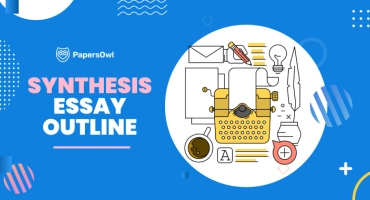How to Write a DBQ Essay: Step-by-Step Guide
Table of contents
- 1 What Is a DBQ Essay?
- 2 DBQ Essay Rubric
- 3 How to Write a DBQ Essay (Step-by-Step)
- 3.1 Step 1: Understand the Prompt (1–2 min)
- 3.2 Step 2: Read and Annotate Documents (10–12 min)
- 3.3 Step 3: Bucket the Documents (2–3 min)
- 3.4 Step 4: Write a Clear Thesis (1–2 sentences)
- 3.5 Step 5: Draft a Quick Outline (1 min)
- 3.6 Step 6: Write the Introduction (Context + Thesis)
- 3.7 Step 7: Develop Body Paragraphs (2–3 “buckets”)
- 3.8 Step 8: Add Outside Evidence (1+ example)
- 3.9 Step 9: Use Sourcing for 2+ Documents (POV, Purpose, Audience, Situation)
- 3.10 Step 10: Add Complexity (nuance, counterargument, change over time)
- 3.11 Step 11: Write the Conclusion + Quick Check (2–3 min)
- 4 DBQ Essay Structure (Outline Template)
- 5 Mini Example: From Prompt to Plan
- 6 DBQ Project Method (What It Is & How It Helps)
- 7 DBQ Quick Checklist
- 8 Sample DBQ Essays for Reference
- You get 60 minutes total, including about 15 minutes for reading and planning.
- The essay is scored on a 7-point rubric: thesis, context, evidence, analysis, and reasoning.
- Success requires a clear understanding of the prompt and strong use of sources.
What Is a DBQ Essay?
A DBQ essay is a type of writing task on AP history exams. Its DBQ meaning is simple: it is an essay that uses 7 given documents as evidence.
Do not forget to place those sources in historical context and show how they support your argument. The key components are a strong thesis, clear body paragraphs, and analysis that directly answers the prompt.
A good DBQ essay requires you to introduce your evidence from the documents, add outside knowledge, and connect everything back to the argument. This skill also helps later in the college admissions process, because you learn to build arguments with proof.
The formally-recognized DBQ essay format is the same for all AP history exams. You get 60 minutes and a 7-point rubric. You must start writing with a thesis, use no fewer than six documents, and explain one piece of outside evidence. These are the key points of the rubric.
👉 Students often compare DBQs with diagnostic essays, but remember: a DBQ typically is unique to AP testing and focuses on evidence from documents.
The DBQ structure is clear:
- Write an introduction with a strong thesis.
- Add 2–3 body paragraphs that group documents into categories.
- Include sourcing and outside evidence.
- End with a concise conclusion.
Focus on the key components in the scoring guide, and you will be ready for the exam!
DBQ Essay Rubric
Many students ask how to write a good DBQ. This rubric applies to AP World History, AP European History, and AP U.S. History. It is part of the advanced placement.
A document-based question tests critical thinking. It uses documents and outside facts. Accordingly, use the rubric to plan clear body paragraphs and a focused essay.
Simple Table: Criteria vs. How to Earn Points
| Criteria | How to Earn the Points? |
| Thesis (1) |
Write one thesis statement. The clear thesis must guide the essay and the main argument. It must directly answer the prompt and use documents. If you’re unsure how to structure it, you can turn to a college paper writing service for professional assistance. |
| Contextualization (1) | Give quick historical context. Link the prompt to a historical event or trend. Use outside historical knowledge to frame the documents and the thesis statement. |
| Evidence (3) | Use at least six documents. Cite the provided documents to provide background information. Explain how document evidence supports your claim. Add one outside evidence from the historical period. Organize proof inside body paragraphs. (Tip: practice fast essay writing to manage time.) |
| Analysis & Reasoning (2) | Source at least two documents by noting the author’s perspective or purpose. Use analytical skills and add a complexity point. Plan with a simple DBQ outline and keep practicing writing DBQ essays. (Try short drills like writing a classification essay.) |
Breakdown: How to Earn Each Point
Thesis (1 point)
- One clear thesis statement is required.
- A strong thesis statement belongs in the intro or conclusion.
- It must directly answer the document-based question.
- Use some documents to support the claim.
Contextualization (1 point)
- Give historical context in 1–2 sentences.
- Mention a relevant historical event or trend.
- Tie the context to your thesis statement and later body paragraphs.
Evidence (3 points: documents + outside evidence)
- Use the documents precisely. Use at least six documents.
- Cite the provided documents and explain how each document’s evidence supports your claim.
- Add at least one clear outside evidence fact from the historical period.
- Structure evidence inside short body paragraphs. This is key to the DBQ format APUSH and other AP classes.
Analysis & Reasoning (2 points: sourcing + complexity)
- Source at least two documents. Note the author’s perspective, purpose, or audience.
- Use analytical skills to explain how sourcing changes meaning.
- Add a complexity point (counterargument, nuance, or change over time).
- When you plan, use a simple DBQ outline. Keep practicing writing DBQ essays to improve speed and clarity.
Quick Notes & Checks
- Key points: thesis, context, evidence, reasoning.
- Main points: use six documents, add outside evidence, source two documents, and show complexity.
- DBQ essay grading looks for clear use of documents and strong critical thinking.
- Remember what DBQ stands for: Document-Based Question.
- Give a brief historical background in the intro.
- Use a short topic sentence to open each paragraph.
- Keep practicing how to write a DBQ AP World, how to write a DBQ APUSH, and how to write a good DBQ to build confidence.
How to Write a DBQ Essay (Step-by-Step)
Learning how to write a DBQ can feel tough at first, but a clear strategy helps.
A DBQ essay differs from other history papers because you must use the given sources.
To succeed, you should write a DBQ essay in steps. A good DBQ essay follows 11 short stages with time limits, from reading to final check. Each step builds your skills and makes sure you use every document effectively.
Step 1: Understand the Prompt (1–2 min)
Read the prompt carefully. Identify the task and timeframe. For example, a question on the Tea Act may connect to themes of self-governance. Write a quick topic sentence in your notes to stay focused.
Step 2: Read and Annotate Documents (10–12 min)
Do a quick document analysis. Mark main claims, tone, and context. Note links to the time period (e.g., causes of the American Revolution). This helps later when you weave them into your essay.
Step 3: Bucket the Documents (2–3 min)
Sort sources into categories based on themes like economy, politics, or identity. Use at least two documents per group. This will save time when writing your essay and will help you stay within the right time period.
Step 4: Write a Clear Thesis (1–2 sentences)
Form a strong thesis statement that addresses the whole task. A good thesis links back to the essay question and sets up your claims. Example: “The American Revolution grew out of unfair taxes, limited rights, and calls for local control.”
Step 5: Draft a Quick Outline (1 min)
Make a short DBQ outline. Note your thesis, three groups, and one outside fact. This way, even a rushed paper on the American Revolution stays structured.
Step 6: Write the Introduction (Context + Thesis)
Begin with historical context. For example, mention how new British policies upset colonists. End with your thesis so readers know your stance.
Step 7: Develop Body Paragraphs (2–3 “buckets”)
Build your body paragraphs around groups of sources. Start each with a topic sentence. Use at least one of the documents per section and link back to your claim. The essay should also show how acts like the Stamp Act led to anger. Write at least two strong body paragraphs this way.
Step 8: Add Outside Evidence (1+ example)
Strengthen the essay with outside evidence from secondary sources. Mention events like boycotts or colonial assemblies. This proves you can add depth beyond what is given.
Step 9: Use Sourcing for 2+ Documents (POV, Purpose, Audience, Situation)
For at least two sources, note the author’s point of view. Think about why the documents provided were written and who the audience was. This will lift your essay closer to a strong DBQ.
Step 10: Add Complexity (nuance, counterargument, change over time)
Show different perspectives. Maybe loyalists supported the king, while patriots wanted freedom. Link ideas together and prove a strong argument. This makes your essay more like a strong DBQ.
Step 11: Write the Conclusion + Quick Check (2–3 min)
End with a well-written conclusion. Restate your thesis and show how your claims fit the sources. Make sure the essay directly answers the prompt. A good DBQ always ties everything together before submission.
⚖️ Note: The official DBQ format allows 60 minutes, uses 7 documents, and follows the AP Central Bluebook guidelines.
DBQ Essay Structure (Outline Template)
A DBQ structure keeps your work clear. There is no word limit, but a well-organized essay always follows the same shape.
- Introduction: start with context and move into your thesis.
- Body paragraphs: 2–3 sections. Each has a main idea tied to a bucket and uses at least two documents.
- Body paragraphs: show how policies, conflicts, or events fit the theme.
- Outside evidence: add one fact beyond the packet.
- Sourcing: in two spots, explain POV, purpose, audience, or situation.
- Conclusion: restate and rethink your thesis.
Follow this template, and your essay will stay sharp. AP Central confirms no rule on essay length, only the rubric steps.
Mini Example: From Prompt to Plan
This short DBQ example shows how to turn a question into a plan and models the DBQ format in action.
☑️ Sample Prompt (APUSH Example)
Historical issue: “To what extent did British policies cause the American Revolution?” Use the documents to craft your essay.
☑️ Buckets
Sort into 3 categories based on themes: trade, rights, and unity. Each links back to the essay.
☑️ Draft Thesis
“The Revolution grew from trade limits and loss of rights, shown by protest and unity.” It gives a direct claim with solid evidence for the essay.
☑️ Using Documents (D1–D6)
Here, the documents guide the essay. Each document shows cause and effect. Together, the evidence supports the claim.
- D1–D2: anger at taxes.
- D3–D4: growth of colonial unity.
- D5–D6: debates on loyalty.
☑️ Outside Evidence Example
Mention colonial boycotts as outside evidence. Use your own knowledge that shows economic pushback. This detail lifts the essay score.
☑️ Sourcing Example (2 Docs)
Explain the author’s perspective in a letter to Parliament. Then use the provided documents to note the audience. Both show how purpose shapes the essay.
☑️ Complexity Example
Add nuance: some colonists stayed loyal. This balances with different perspectives and still builds a strong argument for the essay.
📖 AP Central and College Board list this as the standard model for planning a DBQ.
DBQ Project Method (What It Is & How It Helps)
The DBQ Project Method is a classroom tool that uses historical sources and historical documents to train students to think like historians.
Instead of just reading, students learn to ask questions, group evidence, and write a short DBQ essay without making common mistakes, such as grammatical errors.
A short example paragraph can even show how debates over British authority shaped the views of early colonial leaders. Another example paragraph may highlight how conflict pushed new ideas about self-rule.
This method builds strong writing skills and sharp critical thinking. Students must decide on a main idea, weigh different voices, and link them in a clear essay. Doing so teaches them how to turn raw facts into meaningful arguments.
Important note: this is not the AP test format. It is a classroom practice tool with a brief summary style. A teacher may give a short DBQ example, but the goal is training, not exam grading. You can learn more on the DBQ Project site.
Mini Example: Industrial Era & Reforms (1880–1917)
- Buckets (3): Labor strikes & unions; Political reforms; Immigration & urban life
- Thesis: Industrialization sparked major social reforms and reshaped American labor and urban society.
- Doc use (D1–D6): Each shows evidence supporting one bucket (e.g., labor strikes, reform laws, immigration reports)
- Outside evidence: Progressive Era legislation (e.g., Sherman Antitrust Act), social commentary by Jane Addams
- Sourcing: POV and purpose noted for D2 (union pamphlet) and D5 (government report)
- Complexity: Adds nuance by contrasting urban reform successes with ongoing rural inequality
- Rubric tie-in: Aligns with 7-point AP scoring for evidence, sourcing, and complexity
DBQ Quick Checklist
Sample DBQ Essays for Reference
Here are three DBQ essay examples from PapersOwl that illustrate various approaches to historical analysis and document-based writing:
This essay evaluates the effectiveness of the Articles of Confederation by analyzing its governance, economic challenges, foreign relations, and the Northwest Ordinance of 1787. It demonstrates how to structure a DBQ response with clear thesis development, contextualization, and evidence integration.
Focusing on the AP World History exam, this essay provides a comprehensive example of approaching a DBQ by analyzing primary source documents, developing a clear thesis statement, and constructing a well-organized argument. It emphasizes the importance of document analysis and synthesis in crafting a successful DBQ essay.
This essay delves into the historical context of the 1787 ratification debates, exploring the ideological clashes and strategic considerations that shaped the U.S. Constitution. It offers insights into analyzing historical documents and constructing a nuanced argument in response to a DBQ prompt.
Сheck my paper








